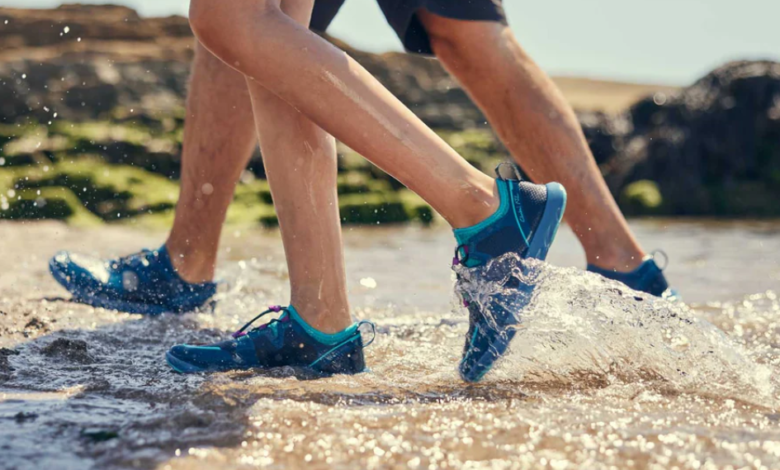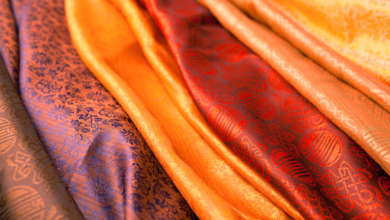What’s the Difference Between Wet Shoes and Regular Shoes?

If you spend time around water—whether it’s for sport, adventure, or leisure—you may have come across wet shoes. But what exactly makes them different from your regular footwear? Can’t you just wear your everyday runners or sandals instead? While they may look similar at first glance, wet shoes and regular shoes serve very different purposes. Understanding their differences can help you choose the right footwear for comfort, performance, and safety in wet conditions.
What Are Wet Shoes?
Definition and Purpose
Wet shoes, also known as water shoes or aqua shoes, are designed specifically for use in and around water. They’re made for aquatic environments and built to handle everything from slippery rocks and saltwater to riverbeds and sandy shores.
Key Features of Wet Shoes
- Quick-drying materials such as mesh or neoprene
- Drainage holes or channels to let water out
- Grippy rubber soles that offer traction on wet, uneven surfaces
- Secure fit to stay on in strong currents or waves
- Often lightweight and flexible for swimming or paddling
Wet shoes are commonly used for kayaking, paddleboarding, boating, snorkelling, canyoning, and rockpool exploration.
See also: What are the Lifelong Changes After a Hip Total Replacement?
What Are Regular Shoes?
Definition and Common Uses
Regular shoes refer to standard everyday footwear like sneakers, trainers, loafers, and casual or formal shoes. These are designed for dry land use and general comfort, not for water exposure.
Key Characteristics of Regular Shoes
- Made from materials like canvas, leather, or knit fabric
- Designed for cushioning and support on hard surfaces
- No drainage—water gets trapped and makes the shoe heavy
- Soles may lack grip when wet, increasing the risk of slipping
Wet Shoes vs Regular Shoes: Key Differences
1. Materials and Construction
- Wet shoes use breathable mesh, quick-drying synthetics, and non-slip soles. They’re built to shed water and maintain a light feel when wet.
- Regular shoes are not designed to interact with water and often retain moisture, making them uncomfortable and potentially unsafe when soaked.
2. Water Resistance and Drying Time
- Wet shoes are engineered to dry quickly—some even dry within an hour when left in a shaded area.
- Regular shoes, especially if made of fabric or foam, can stay soggy for hours or even days after getting wet.
3. Grip and Safety
- Wet shoes offer excellent grip on rocks, boat decks, or slick pool tiles.
- Regular shoes may become slippery and unstable when wet, increasing the risk of falls.
4. Comfort and Fit in Water
- Wet shoes are designed to stay on your feet while swimming or walking through currents. They won’t slip off easily.
- Regular shoes can become heavy, cause blisters, or even fall off due to waterlogged materials and poor drainage.
When to Use Wet Shoes vs Regular Shoes
Wet Shoes Are Best For:
- Water-based sports like kayaking, SUP, and surfing
- Snorkelling or exploring coral reefs and rock pools
- Canyoning, creek walking, or coastal hikes with water crossings
- Boating or sailing where grip and water resistance are essential
Regular Shoes Are Best For:
- Day-to-day walking, errands, and general travel
- Dryland activities like gym workouts, running, or hiking
- Urban settings where water exposure isn’t expected
Should You Own Both?
If you’re someone who enjoys both land and water-based adventures, it makes sense to have both types of footwear. Wet shoes offer protection, performance, and safety in aquatic environments that regular shoes simply can’t provide. They’re also lightweight and packable—ideal for travel, beach holidays, and water sports. Meanwhile, your regular shoes will continue to serve you well in everyday situations and dry conditions.
In Summary
Wet shoes and regular shoes may share some similarities, but their functions are very different. Wet shoes are purpose-built for aquatic activities with features like drainage, fast drying, and slip-resistant soles. Regular shoes, on the other hand, are not suitable for wet or slippery conditions and can become uncomfortable and unsafe when soaked.
If you spend time on the water or love outdoor adventures, investing in a good pair of wet shoes is a smart move. The right footwear keeps you comfortable, confident, and protected—wherever your feet take you.





